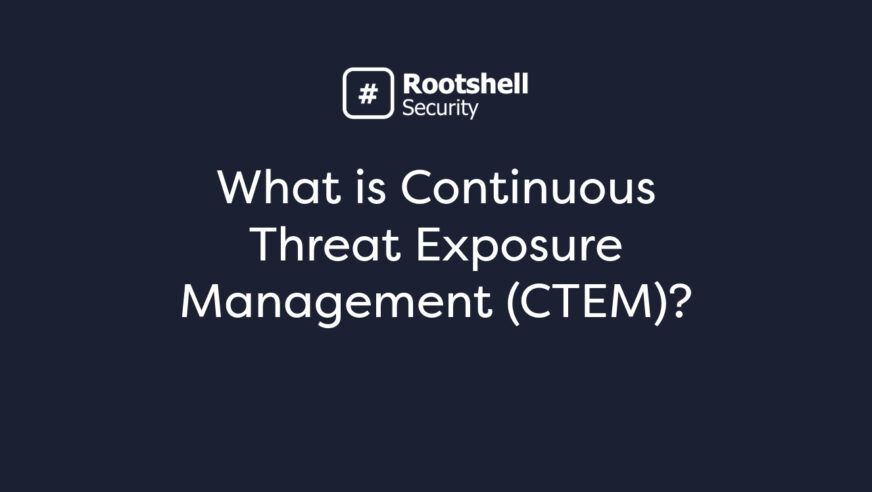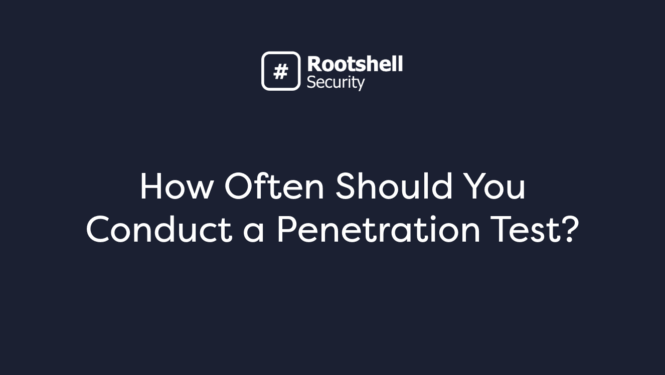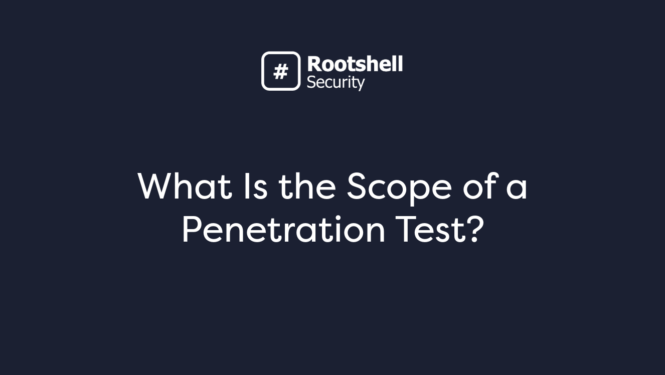Continuous Threat Exposure Management (CTEM) is a proactive security approach introduced by Gartner in 2022 that allows your team to automate the monitoring of attack surfaces. A successful data breach or other security incident can be costly and damaging to an organization.
Instead of checking for vulnerabilities once or twice a year, CTEM is all about continuous monitoring and action. It gives security teams a clearer view of their entire attack surface, and helps them prioritise what to fix first.
Attack surfaces are growing with more cloud services, remote workers and third-party software. There are simply more doors for attackers to try to walk through.
Traditional security measures that rely on periodic scans or manual audits can miss these threats. A Trend Micro Global study for 2025 showed that 70% of UK firms reported cyber incidents stemming from unknown or unmanaged IT assets, a direct result of expanding attack surfaces.
How Does Continuous Threat Exposure Management Work?
CTEM works by monitoring an organization’s attack surface and vulnerabilities. The core components of a CTEM program typically include:
Scoping
The first step in CTEM is understanding your environment’s assets. This includes not just hardware and software but also users, devices, and cloud resources.
To get a full view of potential exposures, tools like Attack Surface Management (ASM), External Attack Surface Management (EASM), and Digital Risk Protection (DRP) are used.
Vulnerability Scanning
CTEM uses automated vulnerability scanning tools to find weaknesses in your system. These scans are performed continuously, making sure that any new vulnerabilities are found as soon as they happen.
Risk Assessment and Prioritization
Once vulnerabilities are identified, they are assessed based on their potential impact. Not all vulnerabilities pose the same threat, some pose a greater risk to the organization than others. For more guidance on how to prioritise vulnerabilities, check out our guide on vulnerability prioritization.
Validation and Testing
After vulnerabilities have been found and fixed, CTEM systems check that the fixes have worked. This includes testing security measures to make sure that they are working as intended. Validation techniques include:
Penetration Testing: We simulate real-world attacks to find vulnerabilities and assess how easily an attacker could breach your systems.
Threat Modelling: This process identifies potential attack vectors and evaluates the risks by simulating how an attacker might exploit them.
Red Teaming: We simulate full-scale attacks, including social engineering and cyberattacks, to test your security framework.
These techniques help verify whether identified vulnerabilities are practically exploitable and ensure that resources are directed toward reducing real threats, not theoretical ones.
Identity and Access Management (IAM)
Another important tool to use in your CTEM strategy is Identity and Access Management (IAM). With so many users and machines trying to access enterprise networks, IAM helps you to confirm that only the right people and devices get through, and that they only have access to what they need. This reduces the risk of unauthorised access and insider threat.
CTEM Example
Imagine a healthcare organization that handles sensitive patient data. This company has a large network with thousands of devices, applications, and third-party interfaces.
A traditional vulnerability management approach would involve scans every so often and risk assessments, but this could leave them exposed to attacks between scans.
Using a CTEM approach means that the healthcare provider can monitor its attack surface, identify vulnerabilities and take immediate action to address them. If a misconfigured device is discovered, CTEM can trigger an automatic fix or alert a security team to address the issue manually.
With IAM used in the CTEM strategy, they can also make sure that only authorized personnel can access patient data, reducing the risk of insider threats and ensuring compliance with regulations like HIPAA.
Benefits of Continuous Threat Exposure Management (CTEM)
Continuous Threat Exposure Management (CTEM) offers many benefits for organizations looking to improve their cybersecurity.
By changing from a more traditional vulnerability management approach to a continuous, real-time approach, CTEM helps businesses reduce the risks associated with their growing attack surface. Here are some benefits of using a CTEM strategy:
1. Real-Time Threat Detection
One of the biggest advantages of using a CTEM approach is that it keeps an eye on things in real-time. Traditional vulnerability management often feels like playing catch-up; by the time a vulnerability is found, it might be too late.
CTEM flips the script by offering constant monitoring, so threats are spotted and dealt with before they can cause damage. Think of it like having a 24/7 security guard who never misses a thing.
2. Full Visibility Across Your Entire Attack Surface
As businesses grow and use more technologies, the attack surface keeps growing. CTEM gives you complete visibility into everything that’s connected to your network. You’ll always know what’s going on, where potential threats might be hiding, and be able to address issues before they snowball.
3. Prioritize What Matters
Not all vulnerabilities are the same. Some might pose a more serious risk, while others are less urgent. CTEM helps prioritize which risks need your attention right away and which can wait.
It’s all about making sure your team focuses on the most pressing issues first, so nothing slips through the cracks.
4. Faster Resolution
With CTEM, gone are the days of dragging your feet when fixing vulnerabilities. Automation speeds things up, meaning you can quickly fix problems before they get out of hand.
5. Easier Compliance
For industries like healthcare, finance, and retail, staying compliant with regulations is a must. CTEM makes it easier by continuously monitoring your environment to make sure compliance standards are always met. This approach reduces the chances of violations and helps you avoid costly fines.
6. Better Team Collaboration
CTEM encourages better communication between security teams, IT departments, and other stakeholders. With a platform for monitoring and managing threats, everyone’s on the same page and can work together.
A successful vulnerability management team thrives on collaboration, as highlighted by Jon Bellard, our Head of Product, who emphasizes the importance of coordination between different teams for effective risk management.
8. Fewer Data Breaches
In the end, the most important benefit of CTEM is the reduced risk of data breaches. By catching vulnerabilities early and responding fast, CTEM helps prevent cybercriminals from exploiting weaknesses.
This means less financial risk, fewer reputational hits, and less stress for everyone involved. It’s a smart way to protect your organization and its data.
9. Ongoing Security Checks
Security isn’t something you can just set and forget, it needs ongoing attention. CTEM offers ongoing security checks so that your security measures are always doing what they’re supposed to do. This constant checking and testing gives you the peace of mind that your security systems are always up to date.
Exposure Management vs Vulnerability Management
Even though people use them the same way, exposure and vulnerability management do different things in cybersecurity.
To quickly summarise, vulnerability management focuses on finding and addressing software weaknesses and prioritizing them using severity metrics such as CVSS scores. For more information on the role of CVSS scoring in vulnerability management, check out our article on CVSSv4 scoring.
Exposure management looks at the bigger picture, focusing on all kinds of risks, with a focus on how they could impact the business. Instead of just looking at severity, it pulls data from different tools to prioritize the risks that could cause the most harm to the organization.
| Exposure Management | Vulnerability Management | |
|---|---|---|
| Definition | Finds and manages your attack surface to reduce exposure to threats. | Finds and fixes vulnerabilities within systems and applications. |
| Scope | Looks at the overall exposure, including assets, configurations, and access points. | Focuses specifically on vulnerabilities within software, systems, and applications. |
| Approach | Continuously monitors for new risks and threats | Addresses known vulnerabilities by periodically scanning and updating. |
| Focus Areas | Attack surface, unauthorized access, and potential risks. | Software vulnerabilities existing systems. |
| Risk Management | Manages risks from external threats to new vulnerabilities. | Manages risks from known vulnerabilities and weaknesses. |
| Objective | Reduce the organization’s exposure to threats across all surfaces. | Reduce the number of known vulnerabilities within the organization. |
| Resolution | Includes a broader range of fixes, such as reconfiguring assets or improving security practices. | Focuses on fixing identified vulnerabilities in systems and software. |
Challenges in Exposure Management
While Exposure Management offers a more proactive, risk-based approach to cybersecurity, it’s not without its challenges. These obstacles must be addressed for a well-rounded approach to reducing risks and keeping your systems protected. Organizations often find themselves grappling with the following hurdles:
1. Tool Overload
Many security teams use multiple tools for vulnerability scanning and asset discovery. The problem? These tools often don’t talk to each other. As a result, valuable data ends up stuck, making it harder to get a view of your risk exposure. Solutions like the Rootshell Security Platform aim to solve this by combining data from multiple sources into a single, actionable view.
2. Incomplete Asset Visibility
You can’t protect what you don’t know exists. Shadow IT and unmanaged devices make it difficult to maintain an up-to-date inventory of assets. Without full visibility, exposures can slip through the cracks and go undetected.
3. Prioritization Problems
As we mentioned earlier, not all risks are equal. But without proper context, teams may waste time fixing low-risk vulnerabilities while missing bigger threats. Exposure Management needs strong risk-based prioritization to be truly effective.
4. Lack of Skilled Resources
With the cybersecurity talent shortage, many organizations simply don’t have enough skilled professionals to keep up with the demands of continuous monitoring, analysis, and response.
Even when using the right tools, integrating them into existing workflows can be difficult. Poor integration slows down response times and limits the effectiveness of an Exposure Management program.
The Future of Exposure Management
Exposure Management is no longer a “nice to have”; it’s becoming an important component of any modern cybersecurity strategy. As attack surfaces and threats grow, the future of Exposure Management is all about being smarter, faster, and more integrated.
Expect greater use of AI and automation in risk-based decision-making and tighter integration with models like Zero Trust. Organizations that invest now in Continuous Threat Exposure Management will be better equipped to manage risk and respond to threats before they escalate.



